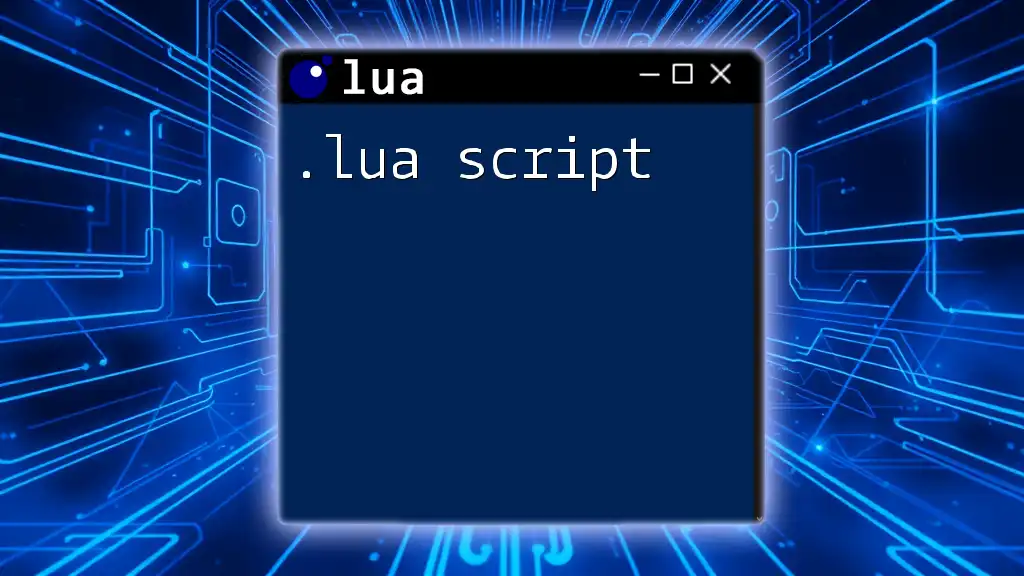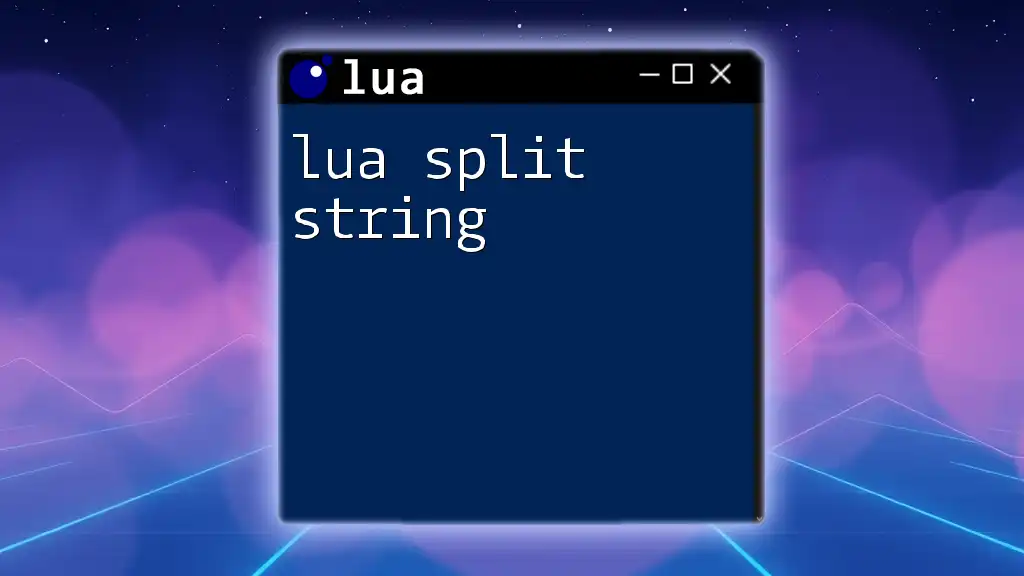In Lua, the `os.execute` command can be used to create a pause in the execution of your script for a specified number of seconds, commonly known as a "sleep" function.
Here’s a simple example of how to implement a sleep in Lua:
os.execute("sleep " .. tonumber(5)) -- Pauses the execution for 5 seconds
Understanding the `sleep` Function
What Does `sleep` Do?
The `sleep` function plays a critical role in programming by allowing you to pause the execution of your script for a specified duration. This pause can give time for processes to complete, improve user experience by not overwhelming the output, or create timing effects in games and animations. Understanding how to use `lua sleep` effectively can significantly enhance your programming capabilities.
Syntax of `sleep`
In Lua, the basic syntax for using `sleep` depends on the libraries you are utilizing. In standard Lua, `sleep` is not built-in, so you often find it in libraries like LuaSocket. Here’s the syntax when using the LuaSocket library:
local socket = require("socket")
socket.sleep(seconds)
This command pauses execution for the specified number of seconds. It’s essential to understand the context in which you are invoking `sleep`, as different environments may have different implementations.

Using the `sleep` Function in Lua
How to Implement `sleep`
To effectively use `lua sleep`, you need to properly implement it in your script. Below is a straightforward example using the LuaSocket library:
local socket = require("socket")
print("Starting...")
socket.sleep(2) -- Sleep for 2 seconds
print("Resumed after 2 seconds.")
In this example, the script pauses for 2 seconds before printing the next message, demonstrating a simple delay in execution.
Custom Sleep Function
If you're not using a library that provides a `sleep` function, you can create a custom function. Here’s how:
function sleep(seconds)
local start = os.clock() -- Get the current time
while os.clock() - start < seconds do end -- Busy wait
end
This custom function uses `os.clock()` to create a loop that keeps checking the elapsed time until the desired pause duration has passed. It’s worth noting that busy-waiting can be CPU-intensive; always consider the context before applying such a method in your scripts.

Practical Examples of `sleep` in Action
Example 1: Delaying Execution
In many scenarios, you may find that introducing a delay between actions improves interactivity or viewer comprehension. For instance, let’s examine a simple loop that prints a message repeatedly with a delay:
while true do
print("Running...")
socket.sleep(1) -- Pauses the loop for 1 second
end
This loop continuously prints “Running…” every second. It’s often used in game loops, simulations, or during animations to control the pace of the output.
Example 2: Creating a Countdown Timer
A practical application of `lua sleep` is in countdown timers. Here’s how you can create a simple countdown timer:
function countdown(seconds)
while seconds > 0 do
print(seconds)
sleep(1) -- Sleep for 1 second between counts
seconds = seconds - 1
end
print("Time's up!")
end
countdown(5) -- Start countdown from 5
This function starts counting down from the specified number and pauses for one second between each count. Utilizing `sleep` here makes the output user-friendly, as it doesn't overwhelm the screen with numbers.

Performance Considerations
Impact of Sleep on Application Performance
Using `sleep` indiscriminately can lead to performance issues, particularly in applications requiring high responsiveness. Blocking execution with `sleep` may cause your application to become unresponsive if used excessively in critical parts of the code. It's crucial to weigh the necessity of a pause against the overall performance impact on your application.
Alternatives to Sleeping in Lua
Asynchronous programming can serve as a viable alternative to `sleep`, allowing you to carry out multiple tasks concurrently without blocking execution. For example, invoking timers or using coroutines can help you manage timing without freezing other parts of your program.

Common Use Cases for `sleep`
Game Development
In game development, the `sleep` function is invaluable for creating smooth animations and managing game logic. Introducing brief pauses can enable actions to happen sequentially without overwhelming the game loop or player.
Networking
In networking scenarios, `sleep` can help control request rates to prevent API throttling or manage resource utilization. For instance, if making several network requests, a brief pause between requests can help adhere to rate limits imposed by the server.

Troubleshooting and Best Practices
Common Issues with `sleep`
One common pitfall is using `sleep` in tight loops; if you don’t manage this carefully, it can lead to significant performance degradation. Be aware of how many times you’re invoking sleep, and try to limit its use in performance-sensitive areas.
Best Practices
To maximize effectiveness, utilize `sleep` judiciously. For instance:
- Use it sparingly in user-facing applications to maintain responsiveness.
- Limit the duration of sleeps to the minimum necessary for your application’s functionality.
- Whenever possible, explore alternatives such as asynchronous operations or coroutines to handle timing without blocking execution.

Conclusion
The `sleep` function in Lua is a powerful tool for controlling execution timing in your scripts. By understanding its usage and implications, you can create more user-friendly applications and robust programs. Experiment with `lua sleep` in your projects, and don’t hesitate to explore more complex timing solutions that Lua offers.

















